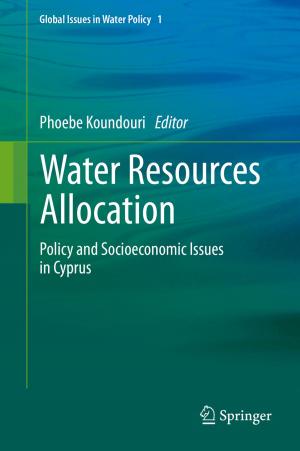Lake Kivu
Limnology and biogeochemistry of a tropical great lake
Nonfiction, Science & Nature, Science, Earth Sciences, Biological Sciences, Ecology| Author: | ISBN: | 9789400742437 | |
| Publisher: | Springer Netherlands | Publication: | May 25, 2012 |
| Imprint: | Springer | Language: | English |
| Author: | |
| ISBN: | 9789400742437 |
| Publisher: | Springer Netherlands |
| Publication: | May 25, 2012 |
| Imprint: | Springer |
| Language: | English |
In the heart of Africa, a unique lake attracts the attention of scientists since the beginning of the 20th century. At the foot of the Virunga volcano chain, Lake Kivu harbors a vast amount of dissolved carbon dioxide and methane, making this lake the most dangerous lake on Earth. But the lake furnishes also many goods and services for surrounding populations and may soon become the most important energy supplier in the area. At the beginning of gas exploitation, the time has come for gathering the large amount of scientific information acquired during past and present research on Lake Kivu. The eleven chapters cover many aspects of the physics, geochemistry and biology of the lake, with a particular focus on the unique physical and geochemical features of the water column and on the ecological functioning of the surface waters. The impacts of the introduced fish species and the potential impacts of methane exploitation are also summarized. This multi-disciplinary book may also be used as an introduction to the limnology and biogeochemistry of large tropical lakes, as it covers various aspects of the physics, geochemistry, biology and ecology of the African Great Rift lakes.
In the heart of Africa, a unique lake attracts the attention of scientists since the beginning of the 20th century. At the foot of the Virunga volcano chain, Lake Kivu harbors a vast amount of dissolved carbon dioxide and methane, making this lake the most dangerous lake on Earth. But the lake furnishes also many goods and services for surrounding populations and may soon become the most important energy supplier in the area. At the beginning of gas exploitation, the time has come for gathering the large amount of scientific information acquired during past and present research on Lake Kivu. The eleven chapters cover many aspects of the physics, geochemistry and biology of the lake, with a particular focus on the unique physical and geochemical features of the water column and on the ecological functioning of the surface waters. The impacts of the introduced fish species and the potential impacts of methane exploitation are also summarized. This multi-disciplinary book may also be used as an introduction to the limnology and biogeochemistry of large tropical lakes, as it covers various aspects of the physics, geochemistry, biology and ecology of the African Great Rift lakes.















